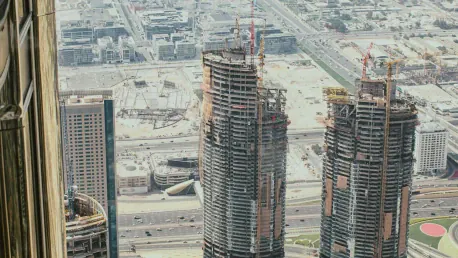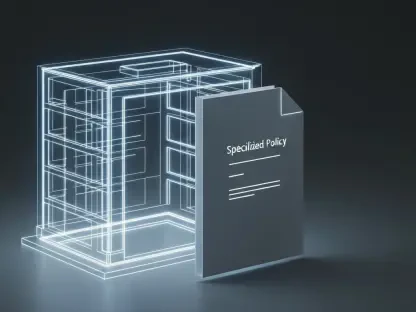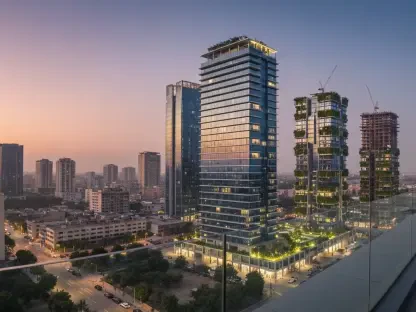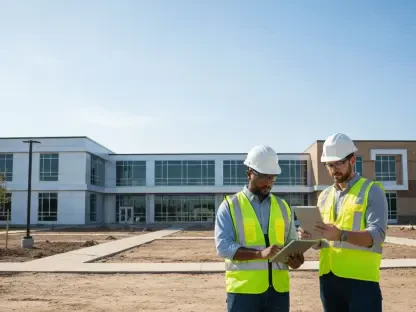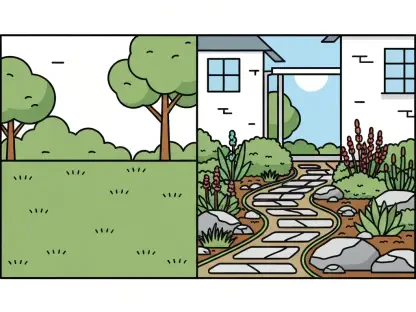In the rapidly evolving landscape of Bahrain’s construction market, remarkable growth trends have emerged, shaping a robust and dynamic industry trajectory until 2029. The value of construction tenders awarded has surged impressively, reflecting increased investment activities across various sectors. This substantial growth is driven by both public and private sector investments, emphasizing developments in industrial, commercial, and energy projects. Bahrain’s construction industry exhibits a real-term growth rate of 3.5%, highlighting the sector’s resilience and potential for further expansion. This article provides a comprehensive analysis of the profound developments, challenges, and strategic forecasts shaping Bahrain’s construction market.
Significant Increase in Construction Tenders
Bahrain’s construction industry has witnessed an astounding rise in the value of construction tenders awarded, demonstrating robust investment activities. The surge of 145.2% year-on-year in 2024, following an increase of 114.1% in the previous year, underscores significant development efforts. Public and private investments have driven the expansion of industrial, commercial, and energy projects, contributing to a real-term growth rate of 3.5%. This reflects the industry’s solid foundation and potential for sustained growth, underpinned by strategic investments and government policies favoring infrastructure development. Despite challenges such as high wage costs and reduced construction loans, the market remains optimistic.
Strategic investment initiatives play a crucial role in this robust growth. These initiatives align with Bahrain’s ambitious Economic Vision 2030, ensuring infrastructural expansion and economic diversification. Notable among these investments is the BHD11.3 billion ($30 billion) Strategic Projects Plan, targeting the completion of 22 national infrastructure projects by 2030. This plan includes the development of five new cities, which is anticipated to further bolster the construction sector. Strategic projects aimed at enhancing transportation infrastructure and renewable energy developments are pivotal, reinforcing Bahrain’s commitment to economic growth and sustainability.
Broadening Investment in Infrastructure and Energy
Investment in infrastructure and energy projects has accelerated Bahrain’s construction industry growth, promising a positive outlook through 2029. Transportation infrastructure projects and renewable energy initiatives are central to Bahrain’s Economic Vision 2030. The Strategic Projects Plan, valued at BHD11.3 billion ($30 billion), emphasizes the completion of critical infrastructure projects. The plan covers five new cities scheduled for completion by 2030, signaling significant advancements in urban development. These comprehensive projects focus on enhancing connectivity, modernizing urban spaces, and promoting sustainable living environments, which are essential for economic and social development.
Bahrain’s commitment to renewable energy is embodied in its National Renewable Energy Action Plan (NREAP). This plan aims to reduce carbon emissions by 30% by 2035 and achieve net-zero emissions by 2060. The focus on renewable energy projects complements the broader infrastructural development strategies, providing a balanced approach to growth and sustainability. Projects under NREAP are expected to stimulate construction activities related to renewable energy, fostering innovation and technological advancements in the sector. This dual strategy, encompassing infrastructure and energy projects, ensures Bahrain’s construction market remains dynamic and forward-looking, meeting contemporary demands and future challenges.
Addressing Challenges and Future Prospects
Despite Bahrain’s construction market’s positive outlook, certain challenges persist. High wage costs and a decline in construction loans could impede growth. Furthermore, fluctuations in global economic conditions may affect investment levels. Addressing these challenges requires strategic policy interventions and collaborations between public and private sectors. Nonetheless, the annual average growth rate of 4.9% projected from 2026 to 2029 signifies optimism. Continuous investments in strategic projects, technological advancements, and workforce development are vital for overcoming these challenges and sustaining growth.
Key industry participants, including contractors and consultants, play an essential role in realizing these ambitious projects. Their expertise ensures successful project execution and adherence to quality standards. Detailed analytics and project outlooks across all sectors are crucial for informed decision-making and strategic planning. A comprehensive listing of major projects and analysis of the mega-project pipeline, along with their development stages and projected spending, offers critical insights into the construction industry’s future. This data-driven approach helps stakeholders navigate the market landscape, optimizing investment strategies and ensuring long-term success.
Conclusion
Bahrain’s construction market is experiencing significant growth, creating a robust and dynamic industry set to expand through 2029. The value of construction contracts awarded has risen sharply, indicating heightened investment activity across several sectors. Both public and private sector investments are fueling this growth, with a strong focus on industrial, commercial, and energy projects.
This rapid expansion underscores Bahrain’s construction industry’s resilience, evidenced by a real-term growth rate of 3.5%. This article delves into comprehensive analyses of these developments, addressing the challenges and providing strategic forecasts that define Bahrain’s construction market’s current state and future potential. Key factors include the commitment to infrastructure improvement, innovative technologies, and sustainable practices. As the nation invests in its future, Bahrain’s construction sector is poised for continued growth and transformation, promising many opportunities for stakeholders in the coming years.
